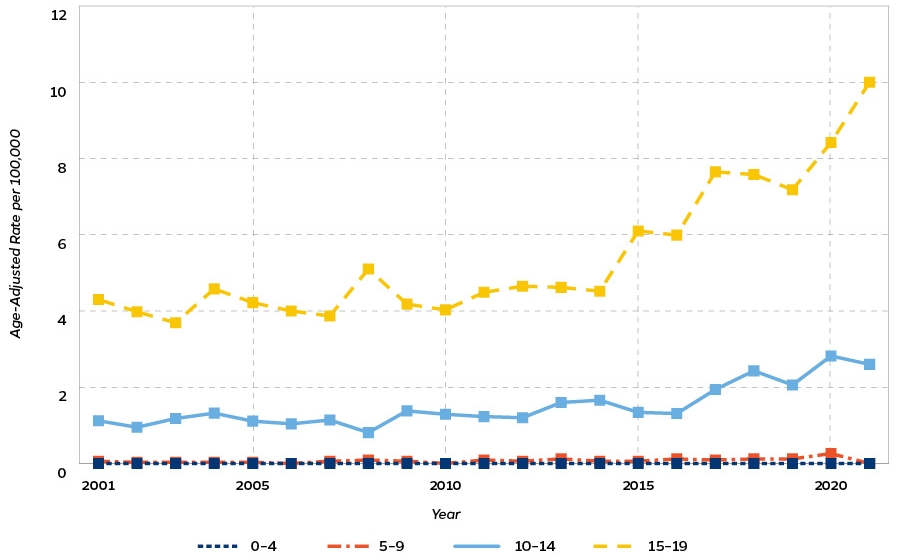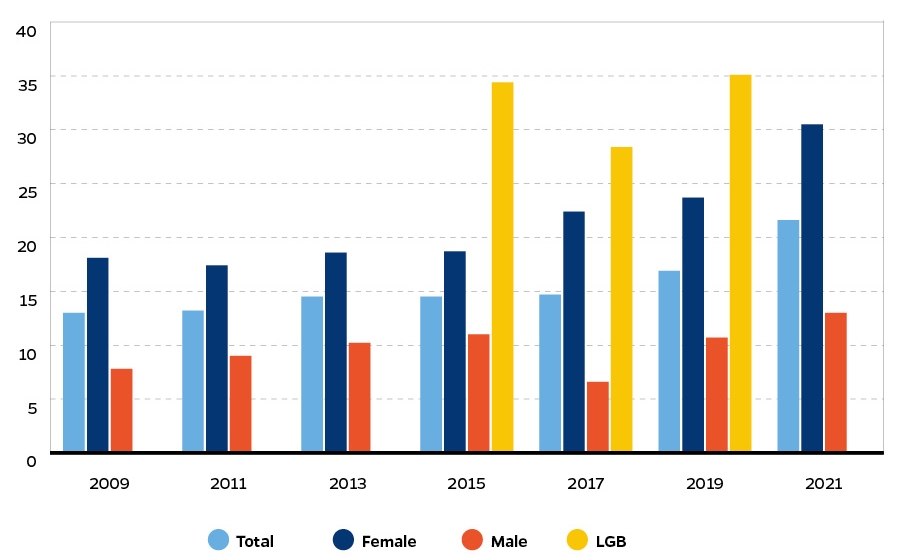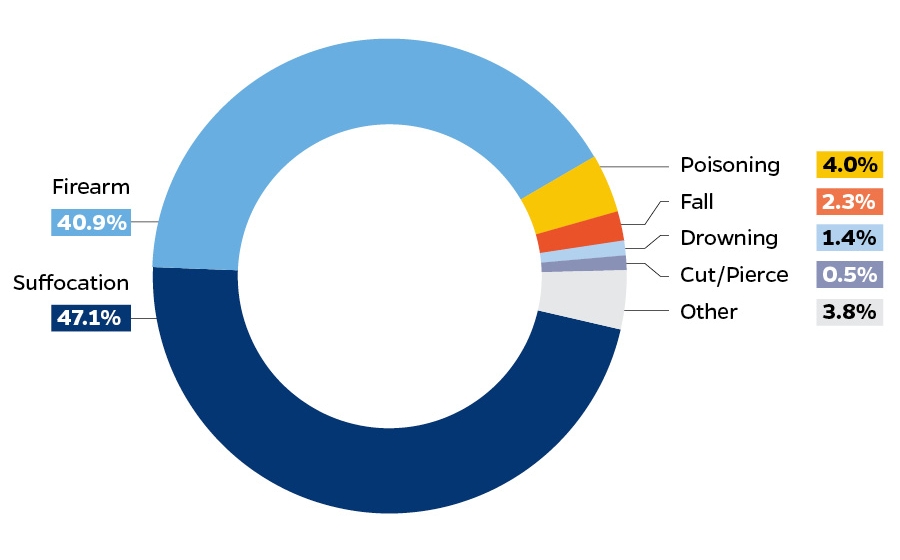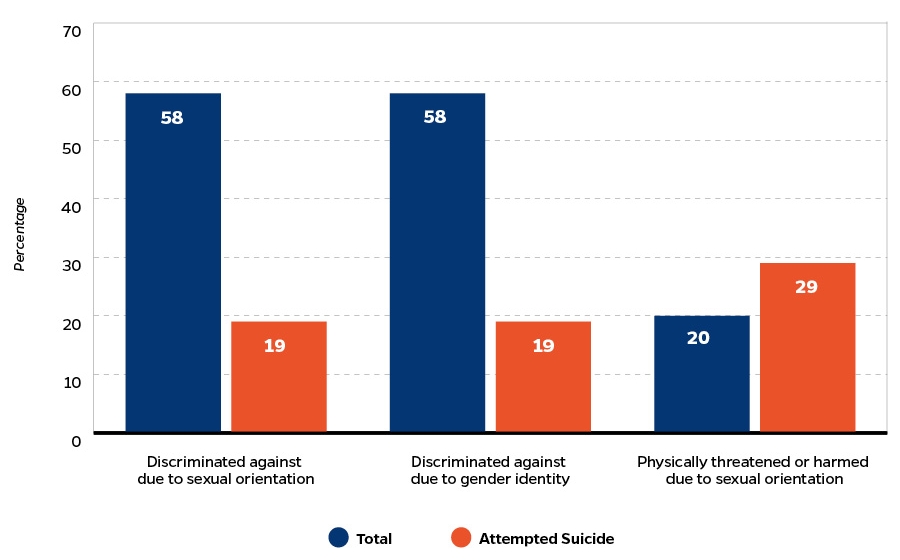Still Ringing the Alarm: An Enduring Call to Action for Black Youth Suicide Prevention
New report highlights that Black youth, particularly Black LGBTQ youth, are at disproportionate risk for suicide, and the prevalence of firearms only heightens this risk.

The crisis of Black youth suicide has only worsened in recent years, however it hasn’t received the same level of attention as other groups impacted by suicide. A new report from the Johns Hopkins Center for Gun Violence Solutions, entitled, “Still Ringing the Alarm: An Enduring Call to Action for Black Youth Suicide Prevention,” highlights research and data and proposes meaningful recommendations to prevent Black youth suicide.
The role of firearms in Black youth suicide is significant and multi-faceted. Firearms are the most common method of suicide among Black boys ages 0-19, according to data from the Centers for Disease Control and Prevention (CDC). High levels of community violence and police violence involving firearms result in racial trauma, serving as risk factors for suicide, according to the CDC.
The report, co-authored by Janel Cubbage, MS, LCPC, MPH, of the Johns Hopkins Center for Gun Violence Solutions and Leslie Adams, PhD, MPH, of the Johns Hopkins Bloomberg School’s Department of Mental Health, was made possible with funding support from the William Talbott Hillman Foundation.
The report demonstrates that Black youth, particularly Black LGBTQ youth, are at disproportionate risk for suicide, and the prevalence of firearms only heightens this risk.
Below is key data highlighted in the report:
Suicide Deaths Among Black Youth Ages 0-19 in the United States by Age Group, 2001-2021
SOURCE: Centers for Disease Control and Prevention (CDC) Web-based Injury Statistics Query and Reporting System (WISQARS)

Black youth have the fastest growing suicide rate compared to their peers of other racial and ethnic groups – between 2007 and 2020, the suicide rate among Black youth ages 10-17 increased by 144%; from 1.54 per 100,000 in 2007 to 3.77 per 100,000 in 2020.
Percentage of Black High School Students Reporting Seriously Considering Attempting Suicide During the Past Year, 2009-2021
SOURCE: Centers for Disease Control and Prevention Youth Risk Behavior Surveillance System (YRBSS). Note: Data for LGB students prior to 2015 and for 2021 is not available.

Percentage of Suicide Deaths Among Black Youth Ages 0-19 in the US by Method, 2001-2020
SOURCE: Centers for Disease Control and Prevention (CDC) Web-based Injury Statistics Query and Reporting System (WISQARS)

For the past nearly two decades, the most common method of suicide among Black youth ages 0-19 was suffocation (47.1%) followed by firearms (40.9%).
Experiences of Discrimination Among Black LGBTQ Youth
SOURCE: Centers for Disease Control and Prevention. Youth Risk Behavior Surveillance System

Black LGBTQ youth face compounding discrimination due to their intersecting minoritized identities. Discrimination is a common experience for Black LGBTQ youth. The discrimination faced by Black LGBTQ youth is wide-ranging and can include not having accepting or safe community spaces, physical threats and violence, and other forms of discrimination.
RECOMMENDATIONS
While not an exhaustive list of protective factors for suicide among Black youth, the authors recommend considering religiosity, social support from peers and families, and cultivating a strong racial identity are important to develop culturally responsive approaches to Black youth suicide prevention. The report includes recommendations designed to address the crisis of Black youth suicide on a community, state, and national level:
- Ensure that small community-based organizations and Black researchers have clear access to suicide prevention research and implementation funds.
- Increase the amount and availability of funding for suicide prevention research and implementation.
- Create safe and supportive spaces for Black youth.
- Evaluate the implementation of the 988 national suicide prevention lifeline to understand the impact among Black youth and other communities of color.
- Understand the role financial concerns play after hospitalization and in accessing follow-up/transition care. Reduce financial concerns about involuntary hospitalization.
- Make mental health services more accessible.
- Engage the Black church in suicide prevention initiatives.
This new report leverages data to demonstrate the crisis of suicide unfolding across the United States and its disproportionate impact on Black Americans. Access to firearms, along with police violence and community violence, only serve to compound the crisis and put Black youth at greater risk of suicide. Significant investment in suicide prevention research and the expansion of mental health services are critical steps toward addressing Black youth suicide and saving lives.
